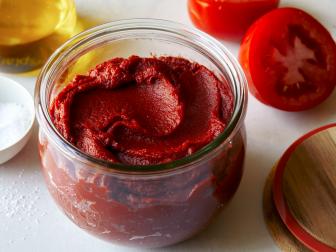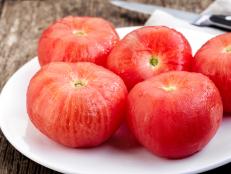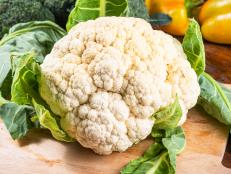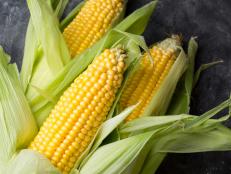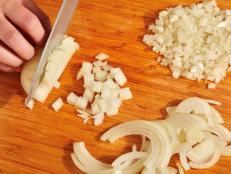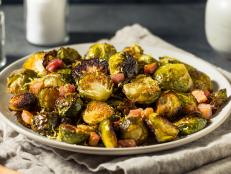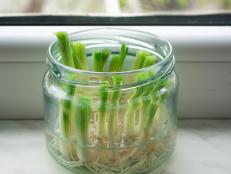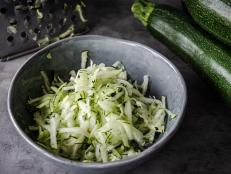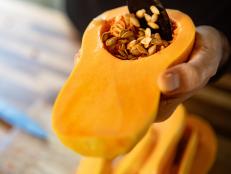What Is Tomato Paste?
Everything you need to know about this pantry staple.
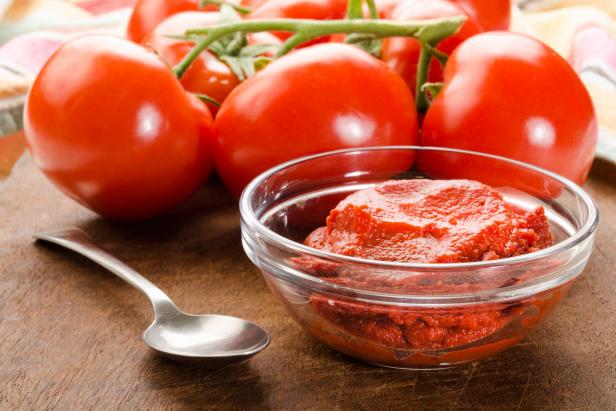
Szakaly/Getty Images
By Alice K. Thompson for Food Network Kitchen
Alice is a contributing writer and editor at Food Network.
Everyday pantry staple, or magical secret to instant flavor? Tomato paste is both, and there’s a pretty good chance you have a little can of it hanging around. But what exactly is tomato paste, and what’s the best way to use this powerhouse? Here’s everything you need to know.
What Is Tomato Paste?
Tomato paste is a pantry staple made from concentrated tomatoes that adds intense, tomatoey flavor to all sorts of dishes without adding extra moisture.
Tomato paste is made from whole tomatoes that are cooked, strained to remove seeds and skins, then cooked again to evaporate moisture. The result is a thick, smooth, deep-red paste with a sweet, highly concentrated flavor. Tomato paste can be pure, with no ingredients other than tomatoes, or may contain small amounts of salt, sugar, herbs and spices and sometimes citric acid as a preservative.
Since it’s intensely flavorful, tomato paste is typically sold in small (6-ounce) cans, or in tubes (4.5 ounces/130 grams). Many cooks swear by the quality and ease of tubes (no can opener required!), but they’re typically double to triple the price of paste in cans. Devotees point out that since it keeps better in a tube it’s just as economical, but proper storage of leftover canned paste is pretty easy (see below for more on that). The choice is yours. Finally, you’ll sometimes see double-concentrated paste sold in tubes; this paste has been cooked down even further, and you can use half the amount in recipes, another convenience.
Homemade Tomato Paste
When you’ve got an end-of-summer abundance of ripe tomatoes, here’s a way to preserve them that will impart a deep tomato flavor to your dishes all through the cooler months.
What Are Paste Tomatoes?
Not surprisingly, “paste tomatoes” are varieties grown specifically to make tomato paste or other long-cooked tomato products. These tomatoes are bred to be lower in moisture (meaning less juicy) and lower in seeds and are typically elongated, not round. Roma (plum) tomatoes are a variety of paste tomato, as are San Marzanos. If you have an abundance of these at season’s end, why not try Homemade Tomato Paste?
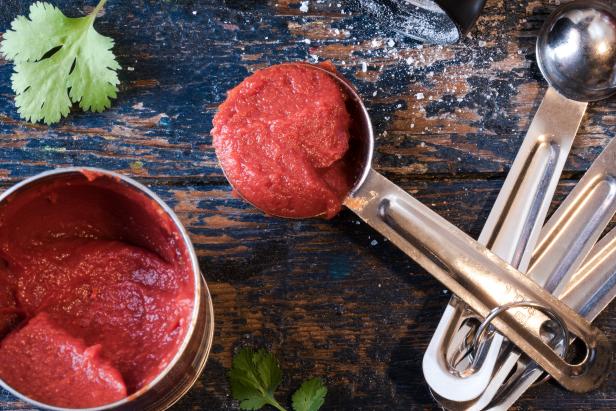
Michelle Arnold / EyeEm/Getty Images
Tomato Sauce vs. Tomato Paste: What’s the Difference?
Tomato sauce and tomato paste differ in the amount they have been cooked to eliminate moisture. Tomato sauce is pourable, while tomato paste is thick enough to hold a spoon upright. Tomato sauce is also typically flavored with herbs, spices, salt and olive oil, while tomato paste generally has only trace amounts of seasonings. That said, in a pinch you can substitute tomato sauce or purée for paste by increasing the amount and adjusting for excess moisture.
What Is Tomato Paste Used For?
Tomato paste brings a number of things to a dish: a burst of the meaty, savory flavor known as umami, concentrated sweetness, mild acidity and thickening quality. It’s often added to reinforce and add depth to the taste of tomato-based dishes like marinara or tomato soup. It’s also added to braises and stews for depth of flavor without being recognizably tomato-y. Since it contains very little liquid, it’s often in dishes like chilis or casseroles that need to stay thick or firm.
Tomato paste is typically added at the beginning of cooking, often briefly sautéed in olive oil. You may have seen recipe instructions to add paste to your pan and cook, stirring, until it “turns brick-red”; this process caramelizes the natural sugars in paste, deepening its flavor, so don’t skip it.
How to Store Leftover Tomato Paste
Most recipes use only a tablespoon or two of tomato paste so it’s important to know how to store leftovers. If you buy your paste in a tube the answer is simple: Make sure it’s rolled from the bottom to remove air, screw the cap back on and refrigerate it for up to several months. If you buy a can you have a couple options, but keeping it the can isn’t one of them; the paste will quickly oxidize and turn black around the edges, taking on an off flavor and eventually growing mold. Transfer it instead to a small airtight container and refrigerate it. The USDA recommends that you use leftovers in 5 to 7 days, so freezing it is a good option too.
How to Freeze Tomato Paste
Since most recipes call for small quantities of paste, it’s most convenient to measure out 1- or 2-tablespoon portions. Either press them into an ice-cube tray (spray it with cooking spray for easy release) or dollop them on a parchment-lined plate. Place the tray or plate in the freezer until solid, 1 to 2 hours, then transfer the frozen chunks to a resealable bag. Label the bag with the quantity of the chunks so you’ll be able to remove just the amount you need for future recipes. You can usually add them directly, no need to thaw them first.
Recipes Using Tomato Paste, Plus One for Making Your Own
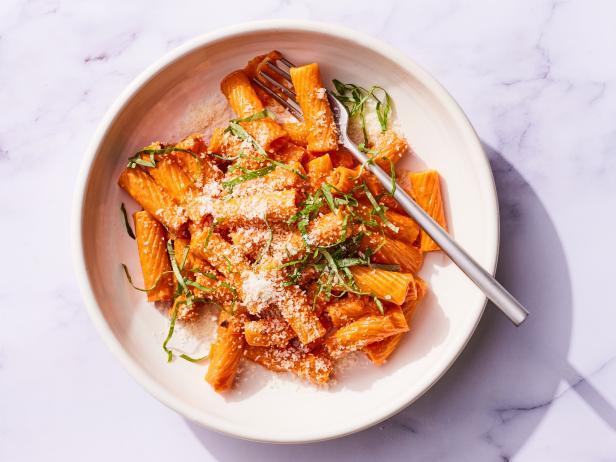
Matt
While most recipes use it in small amounts for background flavor, this one lets tomato paste take center stage. Paired with vodka (a flavor enhancer) and cream, it makes a lovely sauce for your favorite pasta cut.

LUCY SCHAEFFER
In this classic sauce the tomato paste boosts and deepens the flavor of other tomato products. The recipe makes a generous 12 cups, perfect for freezing for multiple meals.

Tara Donne, 2012, Television Food Network, G.P. All Rights Reserved
This popular beef stew recipe shows how a very small amount of tomato paste (just 1 tablespoon) can really boost flavor. The paste is quickly caramelized in the pan with the onion and garlic to give it complex flavor notes.
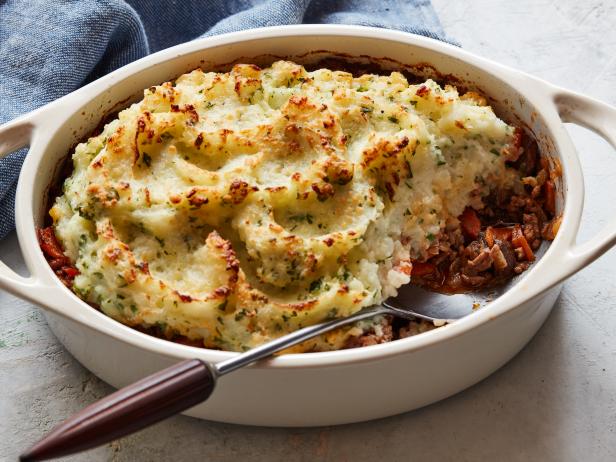
Matt Armendariz
As it does in a stew, tomato paste gives shepherd’s pie rich flavor without adding unneeded liquid. Beef and tomato paste are a go-to pairing, but it’s also a natural with lamb and turkey.
Related Links:
























